Last Updated on 04/17/2023 by Chris Gampat
The larger the sensor, the harder it is to fit a significant zoom range into a single lens. That’s why bridge cameras can pack in a 100x zoom, but the Sigma 60-600mm f4.5-6.3 DG DN OS Sports is, thus far, the only 10x zoom lens for full-frame E-Mount and L-Mount. The ability to shoot at a mid-range focal length, like 60mm and then 600mm is impressive.
But, as impressive as the 10x zoom capability is, putting a wide range of focal lengths into one lens often comes at a compromise. The Sigma 60-600mm f4.5-6.3 DG DN OS Sports is no exception. While the lens has an impressive range, the speed, and sharpness suffer compared to less versatile but similarly priced lenses. The question is, is that versatility worth it? Or is there a reason there are no other 10x full-frame mirrorless lenses out there?
Table of Contents
The Big Picture
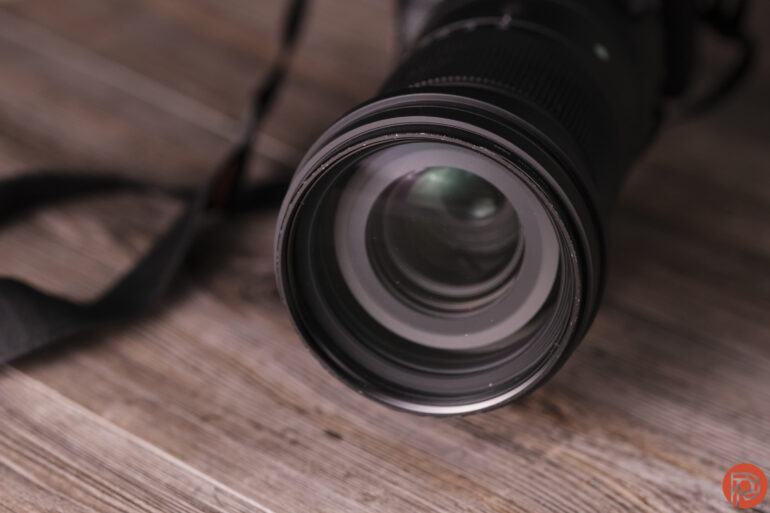
The Sigma 60-600mm f4.5-6.3 DG DN OS Sports is the most versatile super telephoto for E-Mount and L-Mount. The lens can capture 60mm standard focal length images then zoom into the super-telephoto territory. This Sigma replaces at least two lenses, eliminating the need to swap lenses. With weather sealing, the Sigma 60-600mm lens can shoot in environments where swapping lenses would be disastrous, allowing rain or dust inside the camera.
But that versatility does come at a cost. The autofocus falls behind lenses like the similarly priced Sony 200mm-600mm f5.6-6.3 G OSS. Sharpness, too, suffers a bit compared to many mirrorless lenses. While the lens will capture some nice shots, both autofocus performance and sharpness is the trade-off for that all-in-one versatility. At 5.5 pounds, the lens is also heavy — though that’s pretty expected for a 600mm zoom.

The bottom line? I’d prefer the Sony 60-600mm f4.5-6.3 G OSS for sports and wildlife on the E-Mount. But, the Sigma 60-600mm will get the job done for L-Mount shooters or those prioritizing versatility. I’m giving the Sigma 60-600mm f4.5-6.3 DG DN OS Sports three out of five stars. Want one? Take a look here for the latest prices.
Pros
- Extremely versatile 10x zoom
- Replaces at least two lenses in one
- Innovative focal range
- Weather-sealed
- Lots of physical controls
- Excellent lens stabilization
- Lots of background blur at 600mm
- Decent color and a bit of flare for character
Cons
- Autofocus lags on quick subjects
- Sharpness can also suffer
- At 5.5 pounds, this lens is heavy
- Priced similarly to the sharper, faster Sony 200-600mm
Gear Used
I tested the Sigma 60-600mm f4.5-6.3 DG DN OS Sports with the Sony a1. Both the lens and camera body were a loan provided by LensRentals.
Innovations
Sigma has built the first 10x zoom lens compatible with full-frame mirrorless cameras. The move isn’t entirely unexpected — after all, Sigma already has a 60-600mm lens designed for DSLRs. The other innovation is the HLA or High -Response Linear Actuator, a magnet-based autofocus motor.
Ergonomics
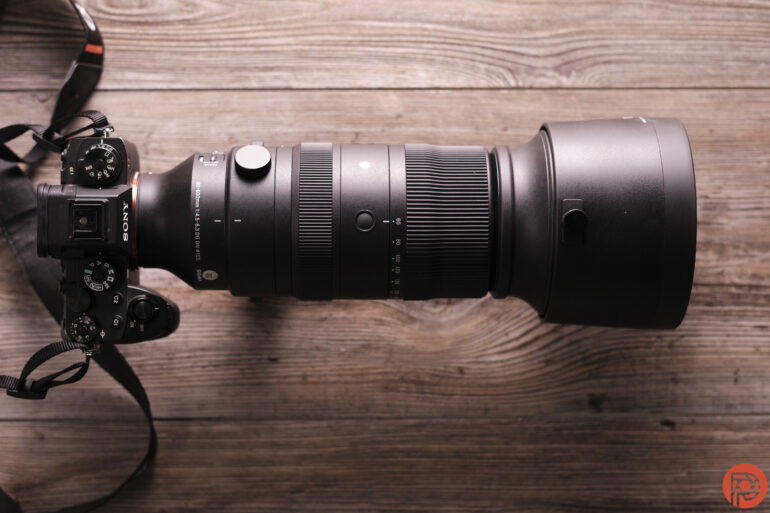
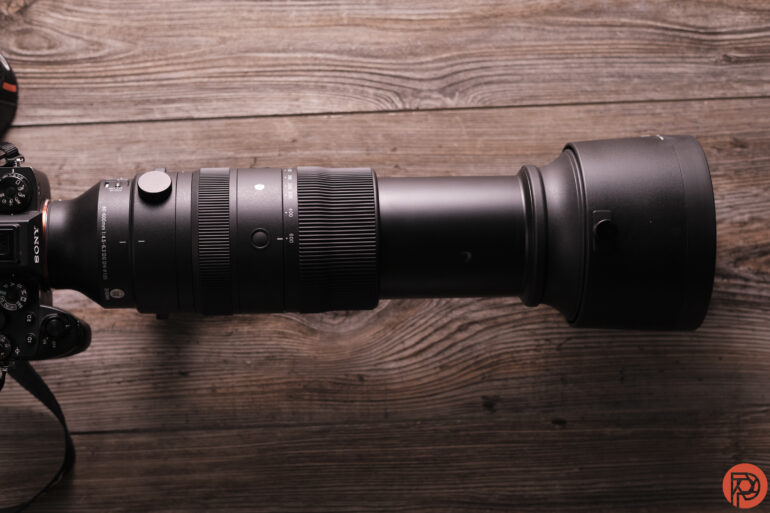
Packing a 10x zoom range in one lens, the Sigma 60-600mm f4.5-6.3 DG DN OS is far from compact. The lens measures 11 inches at the 60mm zoom position and nearly doubles that at the 600mm position. That puts the lens at a 5.5-pound weight. That gets uncomfortable quickly when worn on a neck strap. But a good sling strap goes a long way to balance the weight of this lens across the shoulders and is a worthwhile accessory to add to a lens of this size.
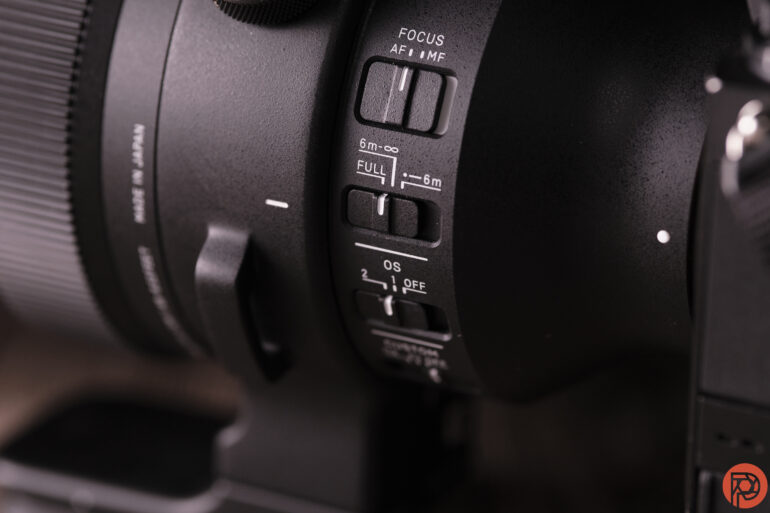
The large size leaves plenty of places for extra controls — and Sigma didn’t skimp here. Right out from the mount is the first bank of control switches. It houses an AF to MF, focus limiter, stabilization mode, and custom setting switches.
Next up is the tripod collar, which has two loops to attach a strap directly to the lens. It ships with an Arca-Swiss compatible tripod mount but can also be switched out for a different type.
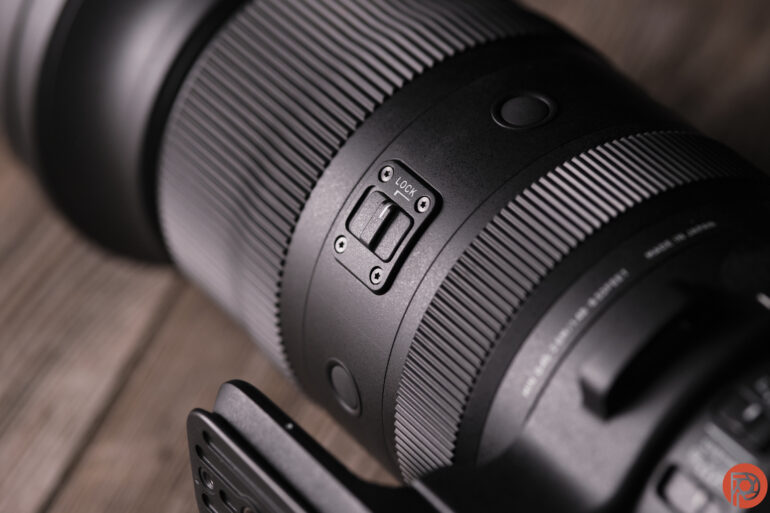
The tripod collar is followed by a narrow focus ring. Further towards the front of the lens sit three AFL buttons to lock focus (or to be customized from the camera body). A lock here prevents the lens from zooming while tucked in a camera bag. The lens is heavy enough that when you let it dangle from your neck, the lens falls open to a larger zoom, so that locking switch may come in handy for more than just tucking in a camera bag.
Finally, the grippy zoom ring sits towards the front of the lens. The lens includes a large hood with a twist lock. The front of the lens — which has very little plastic and mostly glass — takes 105mm filters.
Build Quality
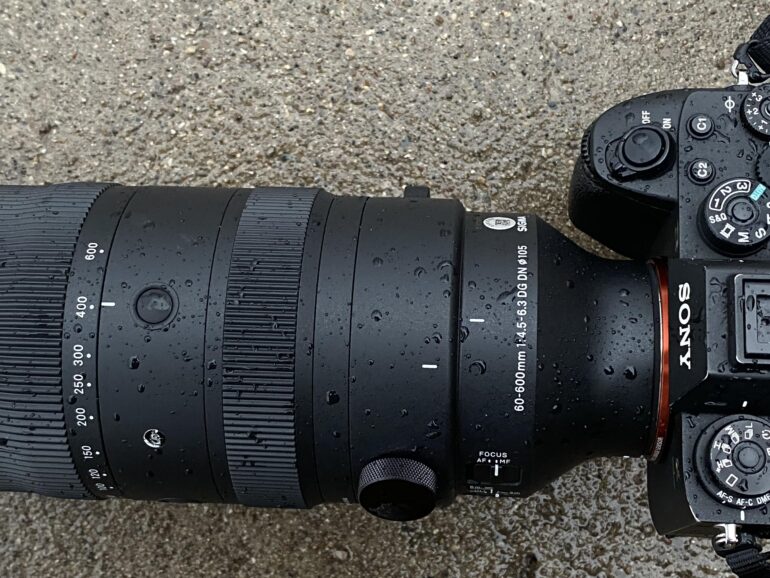
As a Sports series lens, the 60-600mm has weather seals at the mount and moving rings around the barrel. I put this lens out in the rain for a few minutes without issues. I also found no dust or moisture inside the camera body or the lens after the weather testing.
Focusing

The Sigma 60-600mm adopts a new High-Response Linear Actuator, an autofocus motor that uses magnets rather than gears. But, this lens has 27 lens pieces to move, and, as a result, autofocus performance lags behind less versatile lenses. When photographing action, more often than not, the first 3-5 shots in the series were out of focus. That was true for birds coming into land and a game of fetch with my dog. The lens would then pick the action up and keep it in largely in focus but dropping another few frames in the series. Those missed shots were in the low to medium burst speed on the a1, using zone focusing and animal eye AF.

While the autofocus was noticeably struggling, the lens did manage to get enough usable shots in the series. The lens had the most trouble with anything coming directly towards or away from the camera; subjects moving in a parallel line were naturally easier to lock onto. The trouble is, the 10x zoom range is the most prominent reason to purchase this lens. While this lens has enough zoom range to, say, photograph both the quarterback and the wide-receive receiving the pass, I’m not confident the receiver would be in focus fast enough. Is it faster than swapping lenses? Absolutely. But there’s some give and take here.
The 60-600mm just has too many pieces for the HLA motor to move quickly. I tested the 50mm f1.4 Art with an HLA and the autofocus was right on track. But, the 10x zoom range is a wide range of possible focus points and a lot of heavy pieces to move. We had fewer complaints about Sigma’s DSLR version of this lens — I suspect the magnetic autofocus motor isn’t quite ready for a lens of this size.
The zoom range can also present challenges when working with subjects that are less quick. When photographing a stationary bird on a branch, I sometimes had to focus on the tree trunk first because there were simply too many options throughout the zoom range, and the camera had trouble picking the right one. This is a lens where the focus limiter switch is a must. Even still, the focus sometimes moved back and forth between the bird and the nearby branch, even with bird AF active.
The struggle increases as the light drops. Indoors, the lens had trouble locking in for limited light or underexposed shots. I was often able to count to five before the lens finally locked on; turning the exposure preview off only made a small improvement. It’s definitely not the lens for indoor sports.
Can sports photographers still get usable shots from this lens? Yes, absolutely. But, this lens had a higher miss rate than comparable lenses. Photographers who haven’t used a lens this long before will likely find the autofocus in well-lit scenes acceptable. But for me, it was hard to use after testing several other lenses with a 600mm reach.
However, the lens has a reasonable minimum focusing distance of 1.5 feet for a 1:2.4 macro reproduction ratio. While not good enough to call it a macro lens, that extends the lens’s versatility.
Ease of Use
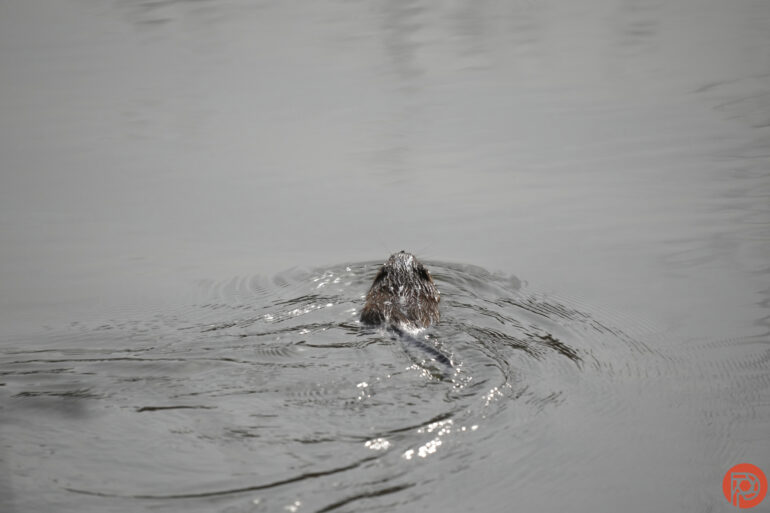
Sigma boasts a stabilization system of up to 7 stops on the wide end and 6 stops at full zoom. I could shoot this lens at 1/60 at 600mm with careful hand-holding. There’s a loss of sharpness lower than that, with an obvious blur coming in at 1/15 seconds.
There are a lot of physical controls on this lens to learn. And the focus limiter switch is key to getting the best performance from this lens. As such, practice will go a long way to get the most from this glass. But it’s not difficult to pick up and start with.
Image Quality
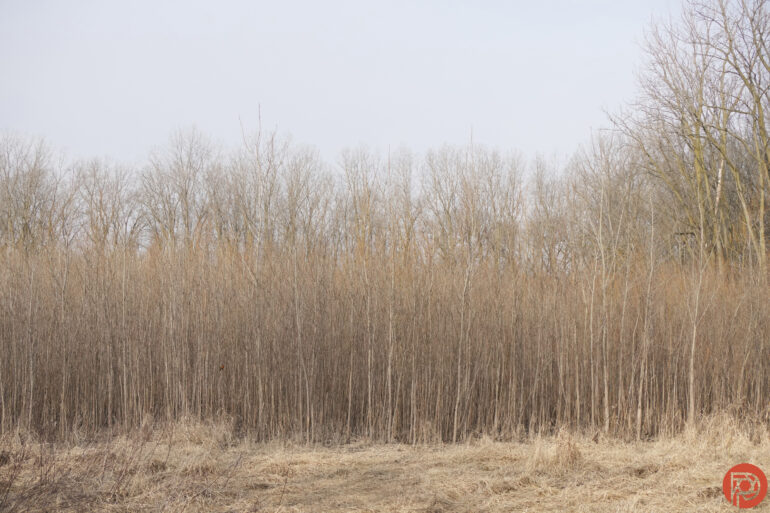

Being able to get close-ups at 60mm and then seconds later bringing distant subjects close at 600mm is pretty incredible. The range of different images possible with this lens is pretty great. The zoom range makes it possible to get nicely soft backgrounds. I didn’t spot much in the way of colored fringing. But, the image quality reminded me a bit of that of a DSLRs — the sharpness, while acceptable, wasn’t on par with the sharpness of a typical Sony zoom lens.
Bokeh

This Sigma lens uses a narrower aperture. But, the 600mm focal length is enough to introduce a lot of background blur, even creating solid color backgrounds in some scenarios.
Points of light are rendered into smooth bokeh balls without a defined edge. At 600mm, those bokeh balls can fill much of the frame. When photographing Christmas lights, I didn’t spot any soap bubbling. But, bokeh created from sunlight glancing across the water had a fun speckled texture.
Color Rendition

I didn’t see any apparent colored fringing. When comparing the JPEG to the RAW, I could see a very slight purple coloration in the highlights. But I wouldn’t have noticed without directly comparing the two. Color otherwise felt very true to the scene without being oversaturated.
Lens Character
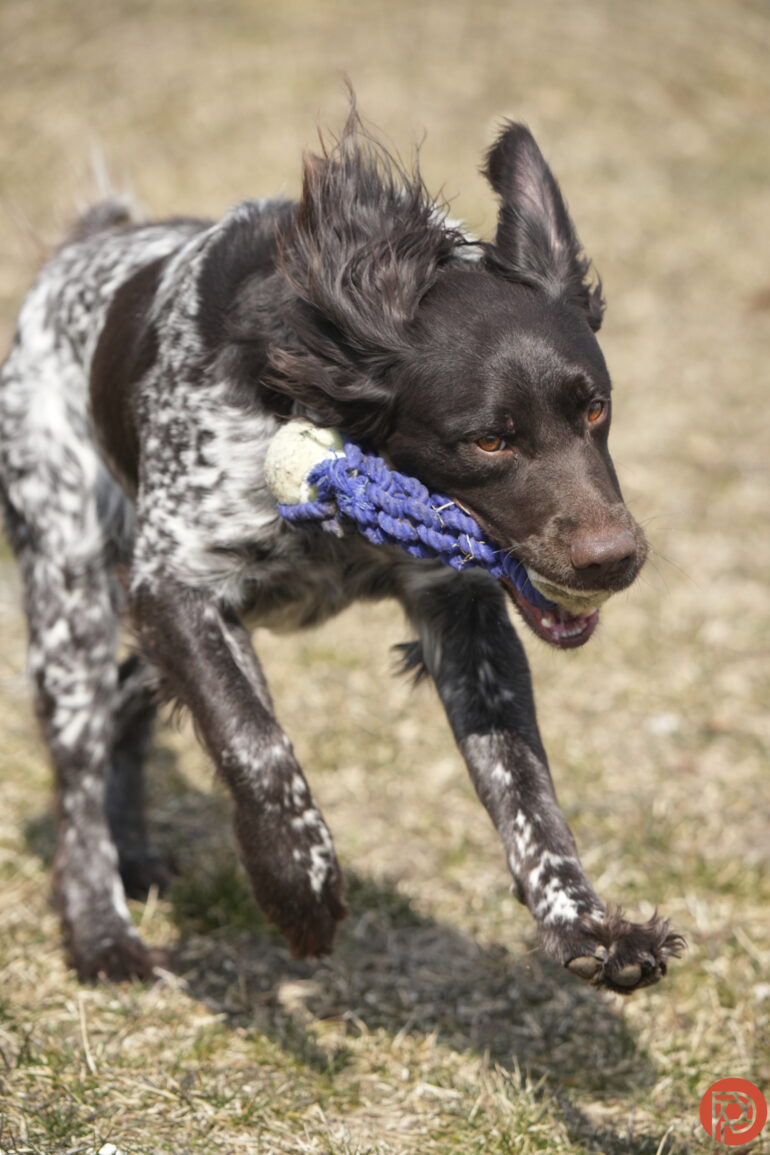
The solid colored backgrounds and compression possible at 600mm are what give images from this lens a bit of character. Yet, the lens can also capture wider shots at a mid-length 60mm with less compression. There’s some minor line bending and vignetting, but it’s hardly noticeable in real-world shots and simple to edit out if warranted. There’s a bit of flare to be had, too, lovely soft blooms of light with occasional colorful ghosting spots.
Sharpness

The sharpness from the Sigma 60-600mm reminded me of a DSLR lens. It’s perfectly acceptable, but it isn’t quite as detail-catching as the telephotos I’ve used from Sony. The lens captures the most detail with close subjects, while more distant subjects appear a bit softer. I found Sigma’s 150-600mm DG DN OS Sports to be sharper.
Extra Image Samples
From day one, The Phoblographer has been huge on transparency with our audience. Nothing from this review is sponsored. Further, lots of folks will post reviews and show lots of editing in the photos. The problem then becomes that anyone and everyone can do the same thing. They’re not showing what the lens can do. So we have a section in our Extra Image Samples area to show edited and unedited photos. From this, you can make a decision for yourself.
Unedited












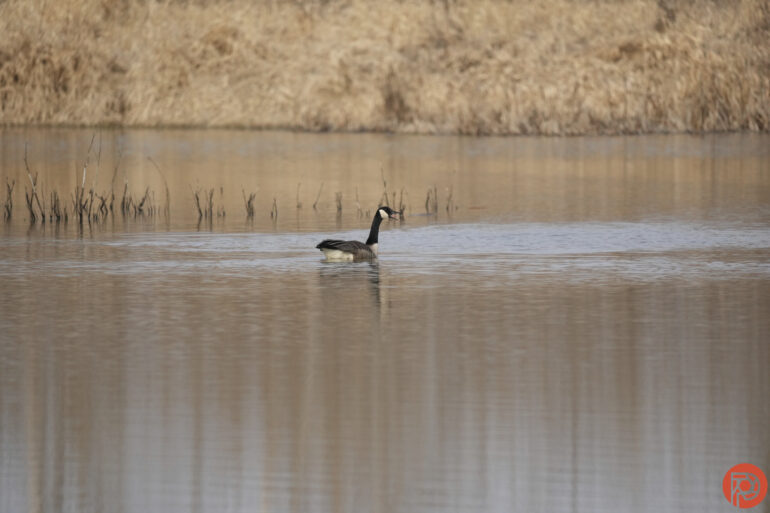
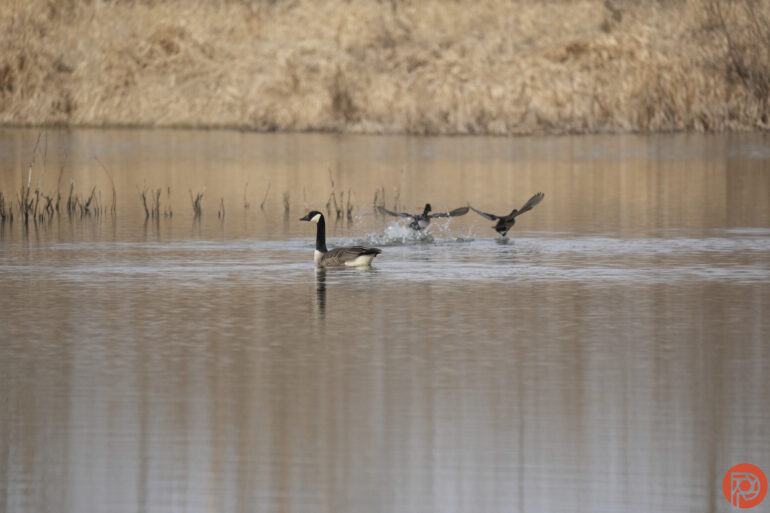



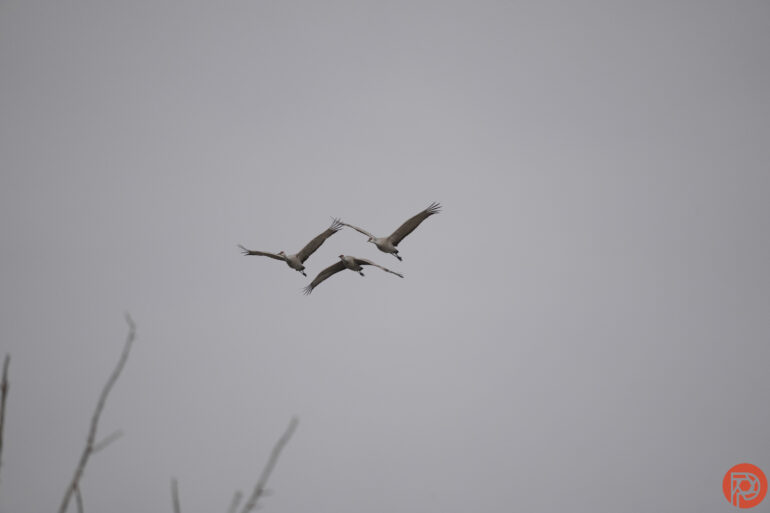











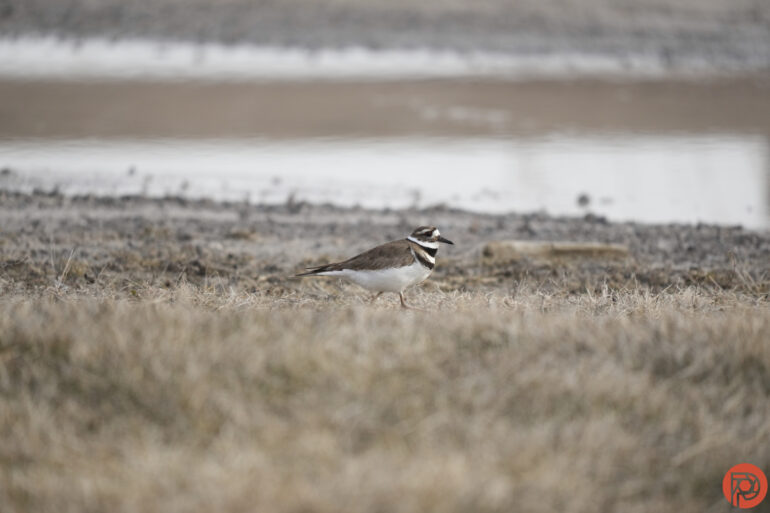


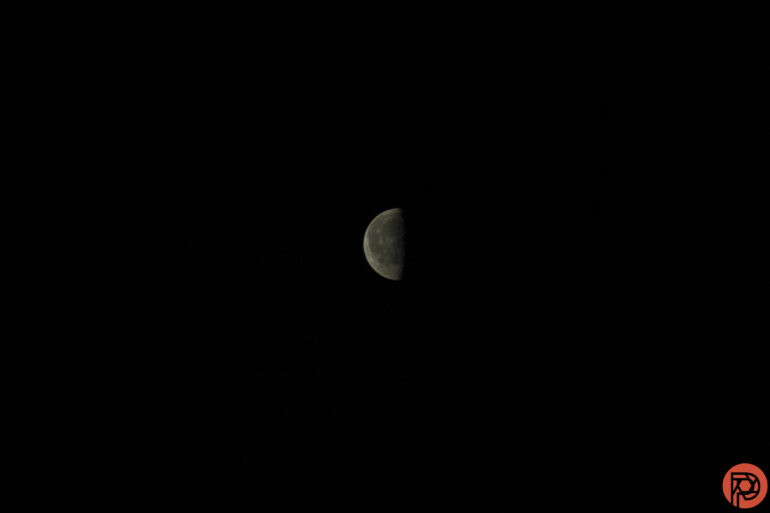
Edited









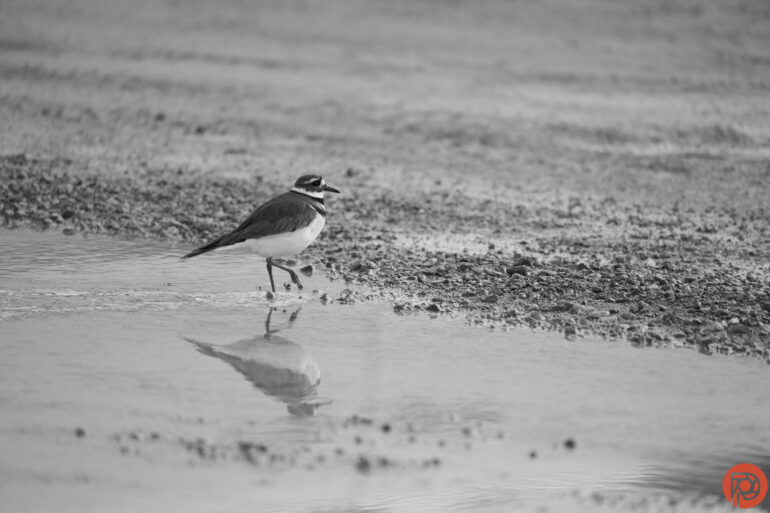
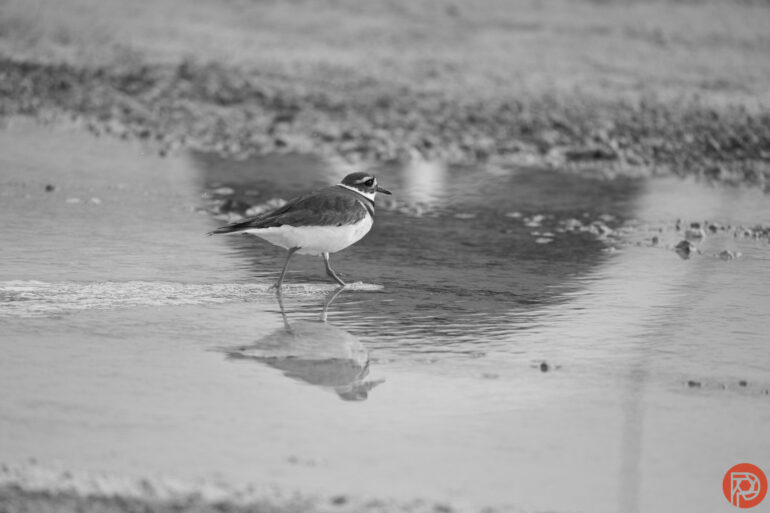


Who Should Buy It?
The answer to the question, “Should I buy the 60-600mm f4.5-6.3 DG DN OS Sports?” comes down to one thing: What’s more important to you, versatility or autofocus speed? If versatility is the most important, then this Sigma has plenty of that. It’ll miss some fast action shots, and results won’t be quite as sharp. But, it will hit 60mm and 600mm when a lens swap isn’t possible due to time constraints or a wet or dusty environment.
If a fast autofocus speed and sharpness are more important, then the similarly priced Sony 200-600mm f5.6-6.3 G OSS is easily the better choice. It drops far fewer frames, resulting in more sports and wildlife photography keepers. Plus, it’s an internal zoom lens that’s a little lighter.
The answer, however, changes for L-Mount shooters, who have few options regarding the 600mm focal length. Again, Sigma’s 150-600mm is a little sharper, but there’s not much out there regarding a super-telephoto zoom for L-Mount. While I would choose the Sony 200-600mm lens instead on E-Mount, there are not many other options that reach 600mm on L-Mount.
Want one? Take a look here for the latest prices.
Tech Specs
LensRentals lists the following specs for the Sigma 60-600mm (E-Mount variation):
- Angle of View: 39.6° to 4.1°
- Aperture Blades: 9, Rounded
- Autofocus: Autofocus
- Brand: Sigma
- Camera Type: Mirrorless
- Compatibility: Crop and Full Frame
- Filter Size: 105.0mm
- Focal Length: 60.0-600.0
- Hood Included: Yes
- Image Stabilization: Yes
- Item Type: Lens
- Lens Type: Supertelephoto
- Macro Reproduction Ratio: 1:2.4
- Max Aperture: 4.5
- Maximum Aperture: f/4.5 to 6.3
- Maximum Magnification: 0.41x
- Mfr. Model Number: 732965
- Minimum Aperture: 29.0
- Minimum Focusing Distance: 1.5feet
- Mount: Sony E
- Optical Design
- Groups/Elements: 19/27
- “F” Low-Dispersion Elements: 2
- Special Low-Dispersion Elements: 3
- Physical Dimensions (ø x L): 4.7 × 11″
- Weight: 5.5 lbs.
- Sensor Size: Crop Frame and Full Frame
- Tripod Collar: Removable
The Phoblographer may receive affiliate compensation for products purchased using links in this blog posted.


